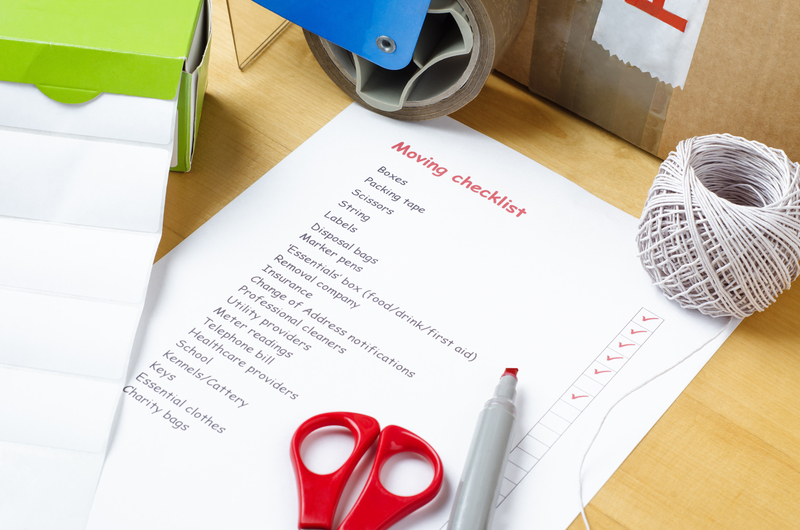How to Plan and Execute a Solo Heavy Lift Successfully
Solo heavy lifting is both a physical and mental challenge, requiring meticulous planning, proper execution, and a deep understanding of one's own abilities. Whether you are tackling a home renovation, moving a large appliance, or striving to break a personal record at the gym, lifting heavy objects alone demands special attention to safety, technique, and preparation. In this comprehensive article, we will guide you through planning and successfully executing a solo heavy lift with actionable tips, expert insights, and crucial best practices.
Understanding Solo Heavy Lifting
Before delving into the steps involved, it's important to grasp what constitutes solo heavy lifting. Anytime you lift or move an object that challenges your strength or size, and you are doing it without assistance, you're engaging in a solo heavy lift. This could include:
- Lifting weights in the gym (powerlifting, deadlifts, squats)
- Moving furniture or appliances during a home project
- Handling construction materials
- Loading or unloading heavy equipment
Each scenario comes with unique risks and requires a tailored approach to ensure safety and efficiency.

The Importance of Planning Your Solo Heavy Lift
Planning is the cornerstone of a successful heavy lift. Without proper preparation, the risk of injury and equipment damage increases exponentially. Thorough planning helps you:
- Reduce the risk of strains, sprains, and other injuries
- Minimize the potential for dropping or damaging the object
- Maximize your lifting efficiency and performance
1. Assess the Load to be Lifted
Start by evaluating the object you need to lift:
- Weight: Can you comfortably lift it alone?
- Shape: Is it awkward or unevenly balanced?
- Grip: Are there handles or surfaces to securely grasp?
- Center of Gravity: Is the object higher, lower, or unevenly balanced?
- Material: Is it fragile, flexible, or prone to damage?
Understanding these characteristics will determine your approach and help you decide whether the lift is realistically possible for you to accomplish solo.
2. Prepare Your Body for the Lift
Lifting heavy items places intense demand on your muscles and joints. Always prepare your body with:
- Warm-up Exercises: Activate your core, back, legs, and arms with dynamic stretches and light cardio.
- Mobility Drills: Ensure you have adequate range of motion, especially in your hips, shoulders, and ankles.
- Mental Focus: Visualize the movement, anticipate the effort required, and commit to maintaining good form.
3. Plan the Route and Environment
Success in solo heavy lifting relies on eliminating unexpected obstacles and hazards. Before attempting your lift:
- Clear Your Path: Remove clutter, rugs, cords, or uneven mats.
- Identify Rest Stops: Know where you can safely set the load down if needed.
- Check the Floor: Ensure it's stable and not slippery.
- Prepare the Destination: Is there enough space? Is the area accessible?
4. Gather the Necessary Equipment and Gear
Using the right equipment can greatly improve your safety and efficiency. For a solo heavy lift, consider:
- Work gloves for enhanced grip and protection
- Lifting straps or a weightlifting belt for extra support
- Furniture sliders, moving straps, or dollies for awkward items
- Supportive footwear with strong traction
Never compromise on safety -- always use protective equipment that is appropriate for your situation and load.
Executing the Solo Heavy Lift: Step-by-Step
Now that you've planned thoroughly, it's time to execute the solo heavy lift safely and successfully. These core steps apply whether you are in the gym or moving a heavy box at home.
1. Adopt the Correct Lifting Technique
Improper technique is one of the main causes of injury during heavy lifting. Follow these fundamental principles:
- Keep your feet about shoulder-width apart for a stable base.
- Bend at your hips and knees (not your back).
- Maintain a straight, neutral spine throughout the lift.
- Engage your core muscles for stabilization.
- Grasp the object firmly with both hands.
- Lift with your legs, not your back, straightening your hips and knees simultaneously.
- Keep the load close to your body to reduce strain on your back.
- Avoid twisting your torso while carrying or setting down the load.
These principles form the basis of all safe solo heavy-lifting endeavors.
2. Breathing and Bracing
Proper breathing and bracing are crucial for maintaining spinal integrity and generating power:
- Take a deep breath into your belly before you lift.
- Hold your breath briefly to create intra-abdominal pressure (also known as the Valsalva maneuver).
- Exhale through pursed lips as you complete the movement, especially if the effort is prolonged.
- Reset your breath if you need to reposition the object or adjust your grip.
3. Lifting and Transporting the Load
When ready, commit to lifting with confidence. Some additional tips for moving the load:
- Lift with steady, controlled motion--avoid jerking or sudden movements.
- Keep your head up and eyes forward to maintain balance.
- If moving the object for a distance, take small steps and keep your balance centered.
- Use your hips and legs to absorb the movement--not your back or arms alone.
- If you need to turn, pivot with your feet instead of twisting your torso.
- Should you become fatigued, set the object down safely--never drop it or let it go abruptly.
4. Setting Down the Object Safely
Setting the object down is just as important as the initial lift:
- Lower the load gently, bending at your knees and hips.
- Maintain a firm grip and control the speed of the descent.
- Keep your spine aligned and avoid rounding your back.
- If possible, slide the object the last few inches to its resting place rather than placing all stress on your arms or back.
Never rush the final phase--many injuries happen when the body is fatigued and attention wanes.
Expert Tips for a Successful Solo Heavy Lift
- Know your limits: Don't attempt to lift more than you can handle, even if it means seeking help or breaking the load into smaller parts.
- Take breaks: If the lift is especially challenging or protracted, rest as needed to avoid fatigue.
- Stay hydrated: Muscles function best when well-hydrated.
- Wear proper clothing: Restrictive or slippery clothing increases the risk of losing grip or balance.
- Communicate your plan: If someone else is nearby, let them know what you're doing in case you need urgent assistance.
- Practice with lighter loads: Before attempting a maximum effort, rehearse your technique with lighter weights to build confidence and muscle memory.
- Use mechanical aids: When in doubt, use dollies, levers, or other aids to minimize strain. Solo does not mean unsupported.
Common Mistakes and How to Avoid Them
Even the most experienced individuals can fall victim to simple errors during a solo heavy lift. Here are common mistakes and how to avoid them:
-
Rushing the Lift:
Solution: Take your time to plan, set up, and execute each stage.
-
Poor Body Mechanics:
Solution: Focus on posture, alignment, and muscle engagement; seek professional advice if unsure.
-
Underestimating the Load:
Solution: Test the weight and ask for help if it's beyond your safe lifting limit.
-
Ignoring Warm-Up:
Solution: Always perform a thorough warm-up before heavy lifting.
-
Neglecting the Environment:
Solution: Clear and inspect your workspace before you begin the lift.
Recovery and Aftercare
After a successful solo heavy lift, it's essential to help your body recover and prevent injury:
- Cool down with light stretching, especially for your back, legs, and shoulders.
- Rehydrate and replenish with healthy nutrients to aid muscle recovery.
- Monitor your body for signs of strain or injury: persistent pain, swelling, or restricted movement require attention.
- If you notice any injuries, use ice, rest, and consult a healthcare professional if necessary.

When to Seek Assistance
It's important to recognize when a solo heavy lift is unsafe to undertake alone. Seek help if:
- The item is too heavy or large for a single person
- The lift will require navigating tight corners, stairs, or uneven surfaces
- You have a pre-existing injury or medical condition affecting your ability to lift
- The object has sharp edges, unstable parts, or poses an unusual risk
- You lack the appropriate equipment or supportive gear
There is no shame in asking for help--the goal is a safe and successful outcome, not heroics.
Conclusion: Mastering Solo Heavy Lifting with Confidence
Successfully planning and executing a solo heavy lift requires solid preparation, flawless technique, and a healthy respect for the limits of your body and equipment. By understanding the demands of your task, preparing both your environment and your body, and following best-practice lifting techniques, you can dramatically reduce your risk of injury and complete your heavy lift with confidence.
Remember, successful solo heavy lifting is not about brute force--it's about smart, strategic action. Prioritize safety, maximize efficiency, and always listen to your body. With these tips, your next solo heavy lift will be your best yet!
```


